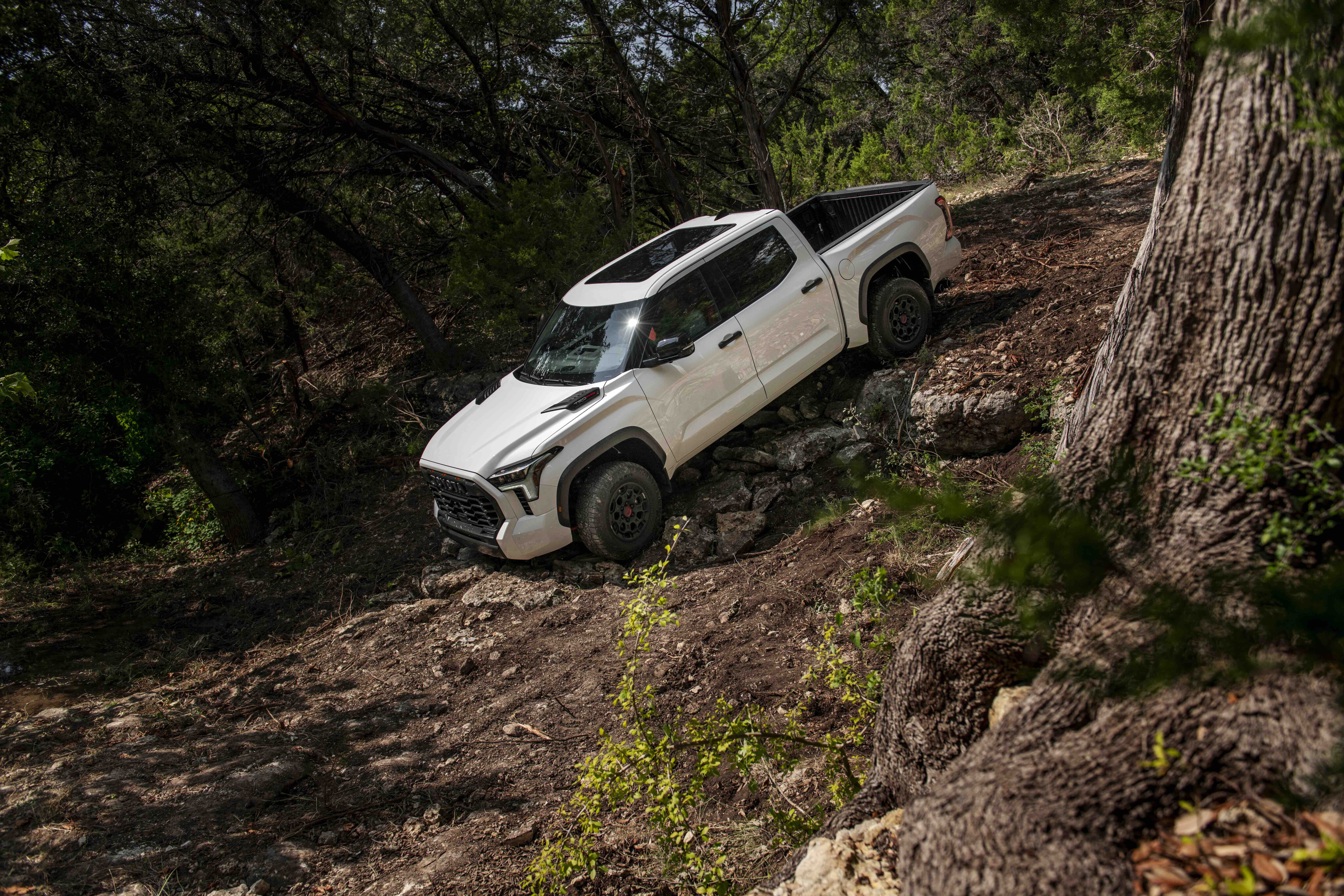
Things we like
- Abundant power and torque
- TRD Pro’s suspension
- Passenger room
- Genuine pick-up truck construction
Not so much
- Exterior dimensions
- Lack of steering feel
- No auto 4WD
With localisation and testing of the 2024 Toyota Tundra already in the works in Australia, North Americans have been enjoying these Texas-made trucks for more than a full calendar year.
In the home market, they’re available in either two- or four-wheel-drive, with two engines, two beds, and multiple trims to choose from.
Still using a traditional full-size pick-up body-on-frame construction, the new Tundra is also Texas-sized and suited to Americans’ XXXL tastes. In its longest configuration, the Double Cab paired with the long box, it stretches nearly six and a half metres in length. It’s just shy of two metres in height and at its widest it spans almost 2100mm across for the model we’re driving here, the TRD Pro.
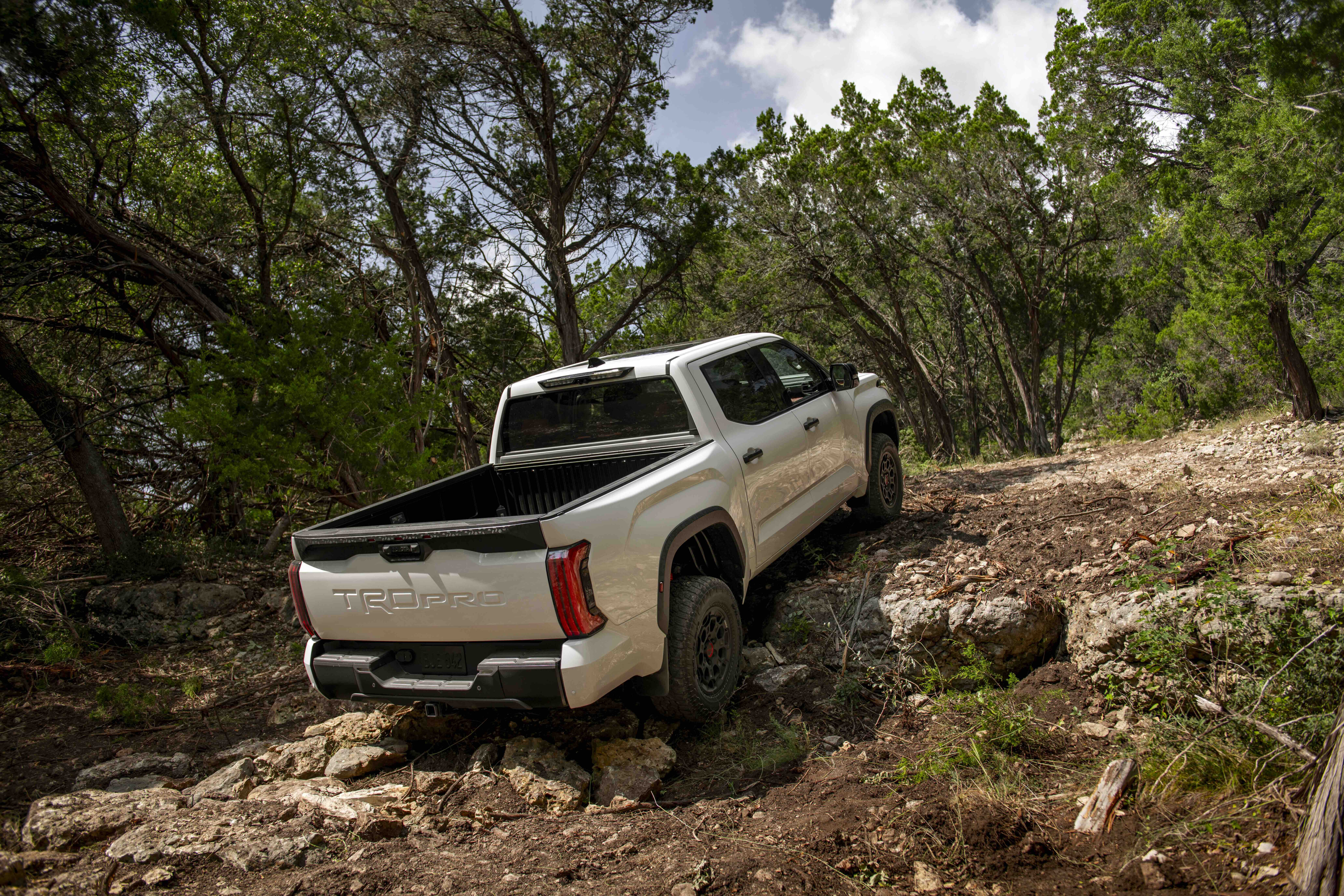
Powertrain
The standard engine is what Toyota calls the i-Force 3.5-litre, twin-turbocharged petrol V6 and like most modern turbo motors, it produces acceptable power and abundant torque.
According to Toyota, this internal combustion engine hits 286kW at 5200rpm and 649Nm at 2400rpm.
With the TRD Pro, the powertrain gains an electric motor between the V6 and the 10-speed automatic. It’s rated at 36kW and 250Nm.
Combined, the i-Force MAX hybrid twin-turbo V6 makes 326kW at 5200rpm and an earth-moving 790Nm at a usable 2400rpm. By the numbers alone, it’s clear that engineers have tuned this hybrid for performance first and fuel consumption a distant, secondary consideration.
For example, with a trim-to-trim comparison between the hybrid and non-hybrid power units, the electrified version is officially rated at 11.8L per 100km combined compared to the gas-only engine at 12.4L/100km combined, a modest five per cent improvement.
The addition of specialised components to the TRD Pro nullifies fuel savings from the hybrid powertrain, but its off-road prowess makes up for that minor penalty at the fuel pump.
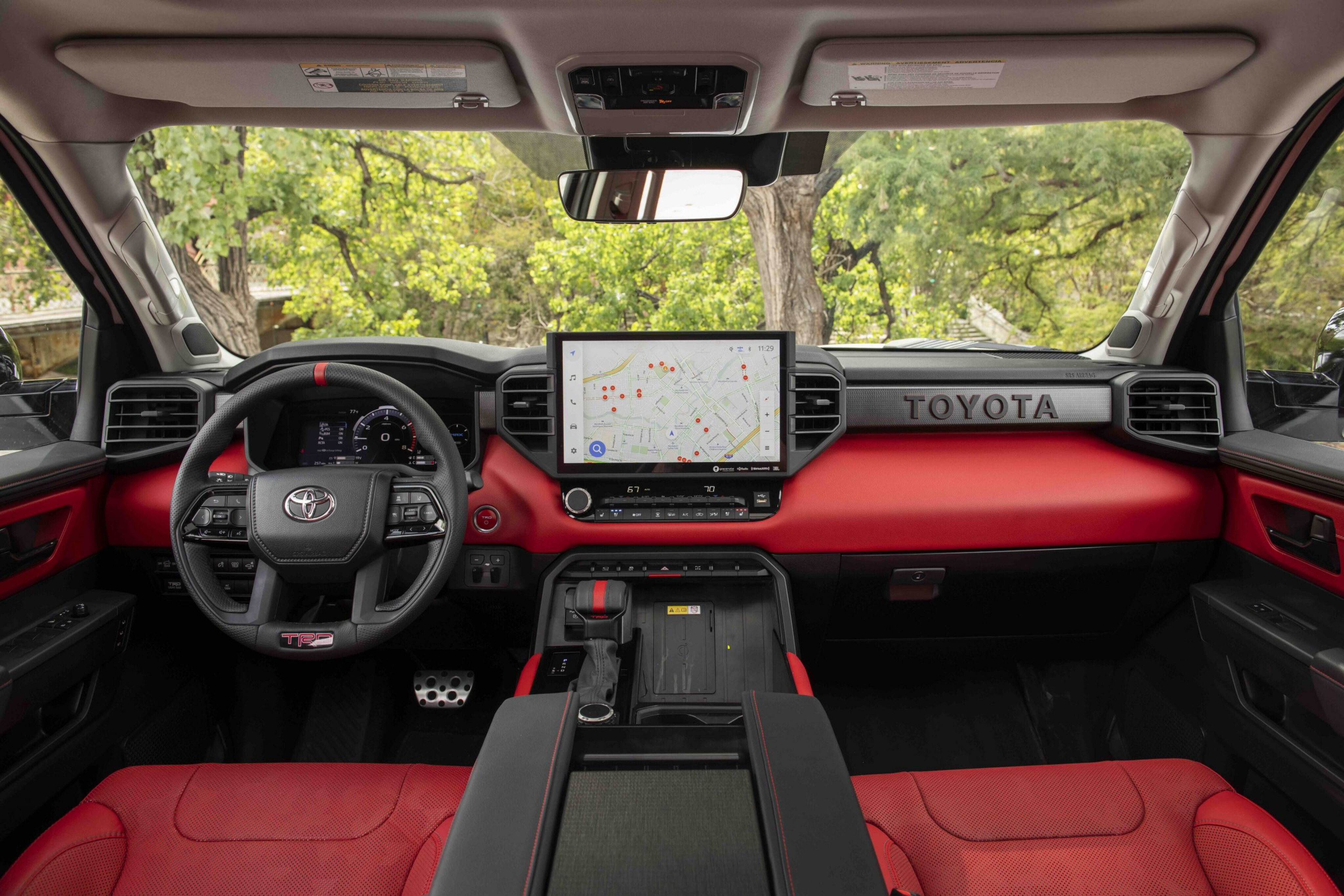
Styling and features
On the outside, the TRD Pro is distinguished by its bespoke, forged, 18-inch BBS wheels fitted with 33-inch, 285/65R18 all-terrain Falken Wildpeak tyres.
Its four-wheel-drive system uses an electronic transfer case and gives the driver the ability to choose between two-wheel drive, four-high and four-low ranges. Some American Tundra owners have lamented the lack of an automatic four-wheel drive setting.
Underneath, there’s a TRD aluminium front skid plate, but all of the magic happens with the suspension tuning. Based on the Tundra’s standard double-wishbone front and multi-link rear design, the TRD Pro adds a unique front anti-roll bar, TRD Pro springs, and a set of tuned internal-bypass Fox dampers. They use a large 63.5mm-diameter aluminium body with onboard external reservoirs.
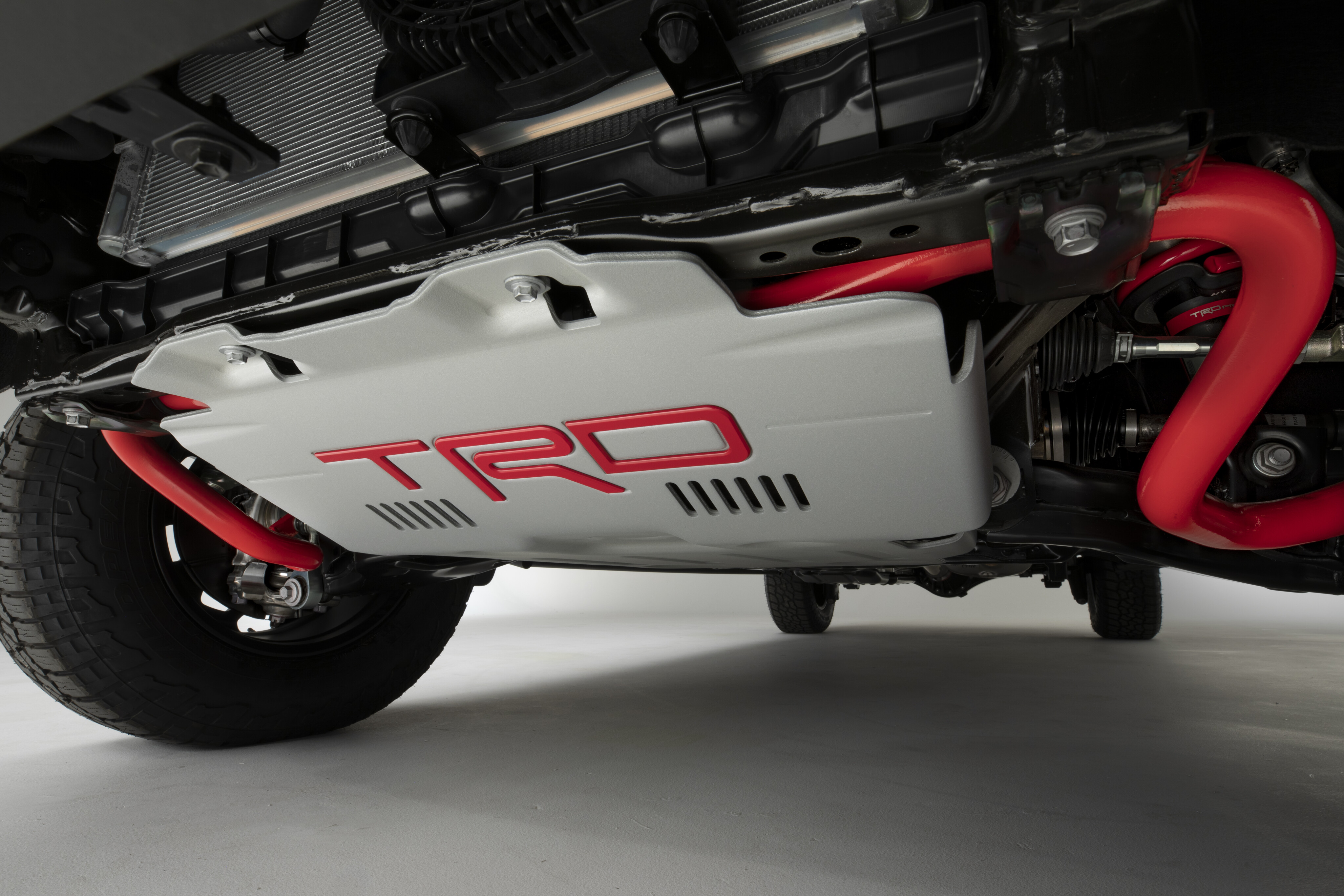
Satisfying the need for moderate off-road capabilities, the TRD Pro springs and Fox dampers add 28mm of height to the front suspension of the Tundra.
For a little cool factor, some of these TRD Pro-specific components are finished in red, making them the perfect conversation starter at your local truck meet.
The TRD Pro, in fact, claims the greatest tow rating of all trim levels at 5068 kilos, along with a maximum payload capacity of 727kg. Those who tow will appreciate the transmission's tow/haul mode and the Tundra’s integrated trailer brake controller (no aftermarket add-ons required).
Cameras assist with not just aligning the truck hitch to the trailer, but when both manoeuvring and driving; the wide-view rear camera gives the driver a glimpse at objects that may be on either side of the trailer.
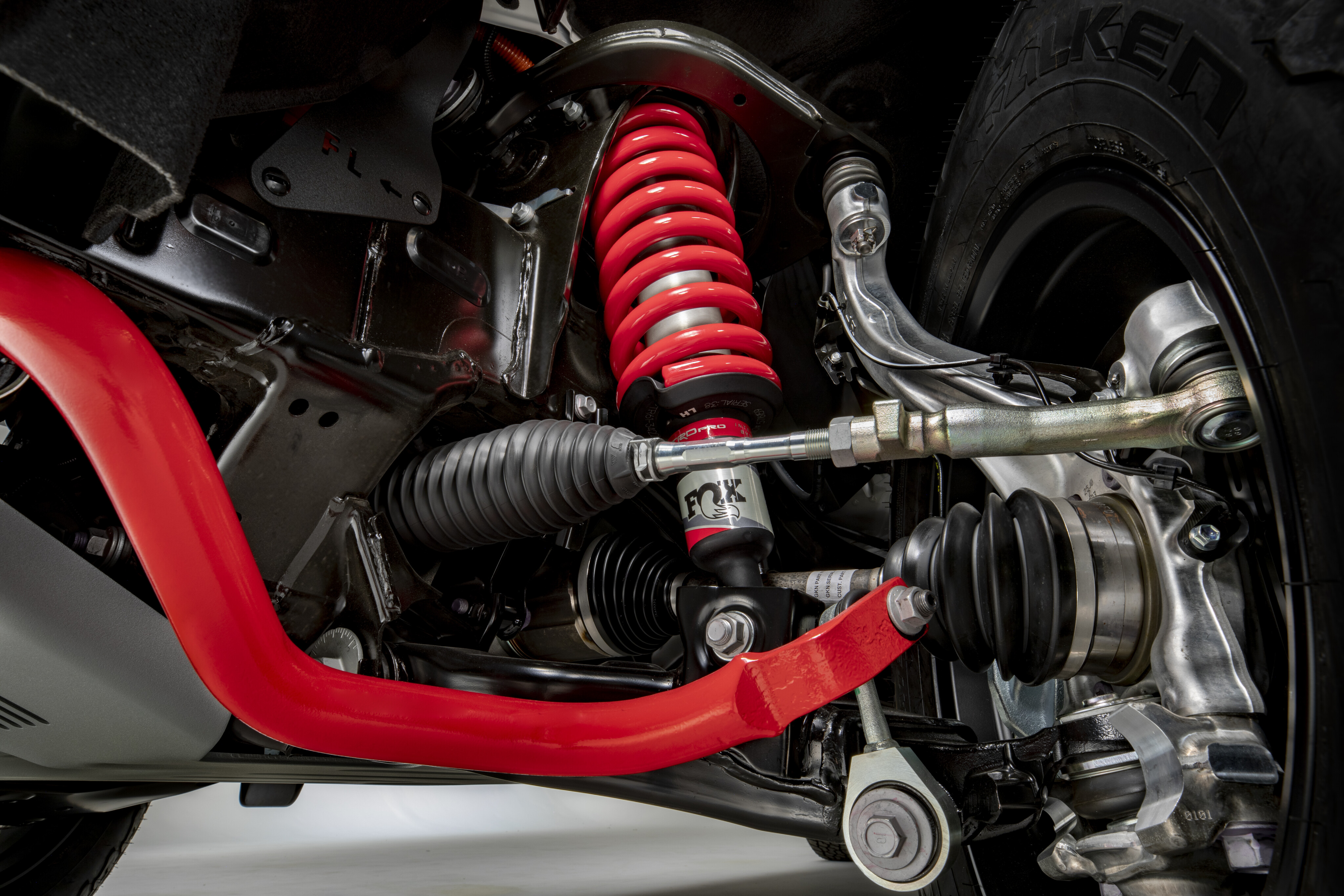
In the cabin: Space and tech
The TRD Pro is available exclusively with the full four-door CrewMax cab (and the shorter 5.5-foot/1.7m bed) and the interior is as spacious as the plains of Texas.
Front seats appear to be designed for that 99th-percentile American and are broad in every dimension.
On the other hand, they’re exceptionally comfortable and supportive for long drives, though a little short of lateral bolstering. In the TRD Pro, the front seats are heated and cooled. Between the seats is a wide, multi-function console with abundant storage options.
As you’d expect with an all-new truck, the cabin is also very tech-forward. It’s on-trend and dominated by a massive 14-inch infotainment touchscreen. The system boasts voice activation, though there’s no word on whether it prefers Texas accents. Wireless Apple CarPlay and Android Auto, and the wireless phone charger resides beside the shifter. North American Tundras are available with a Wi-Fi hotspot that can support up to 10 wireless devices.
In this off-roader, Toyota eschews leather in exchange for its Softex upholstery that’s used across their other TRD Pro trucks and SUVs.
It doesn’t have the feel of leather, is more supple than vinyl, and seems durable enough to outlast the truck, which is more appropriate for a vehicle intended to travel well off the beaten path.
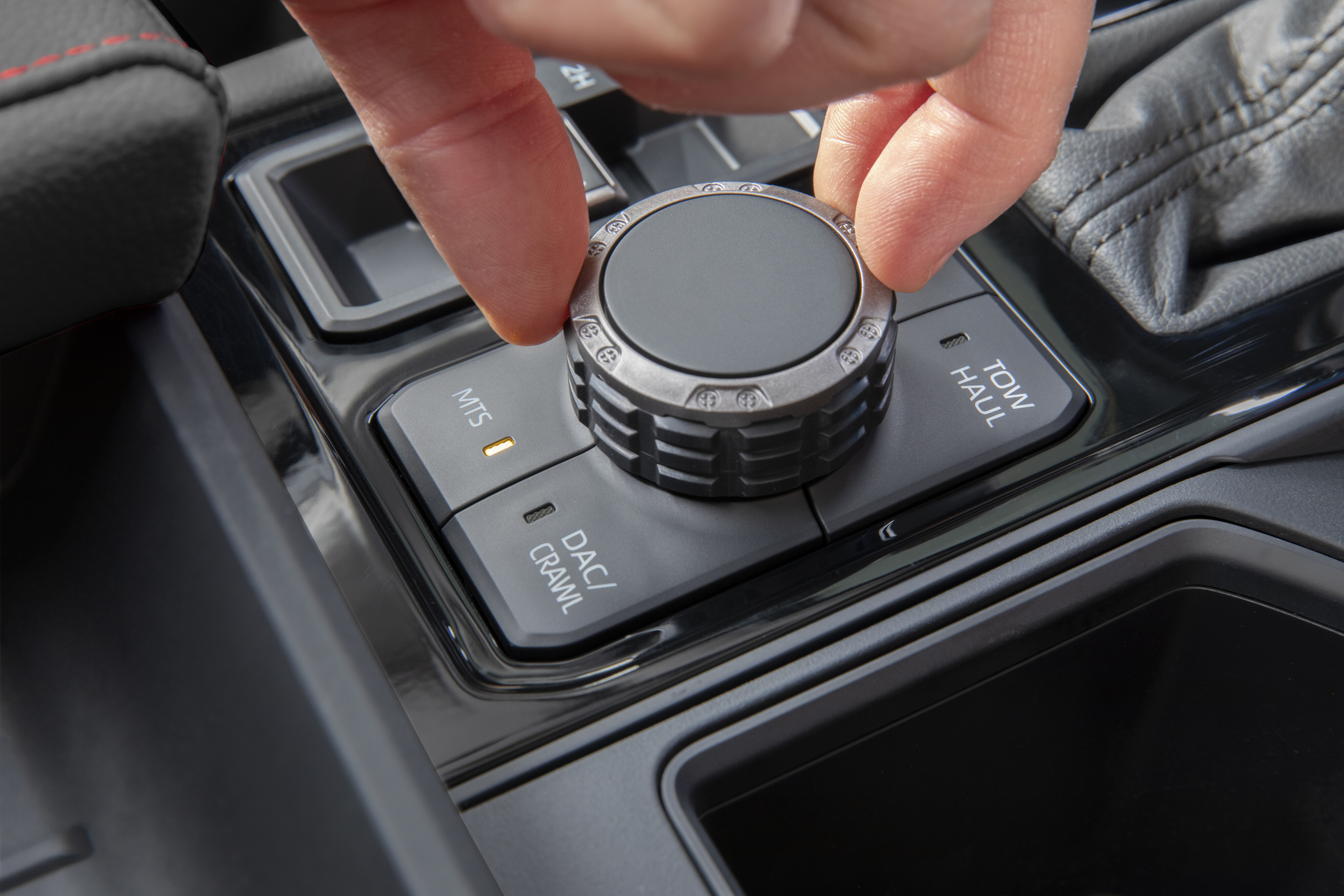
Rear-seat passenger room is abundant with generous head and leg room, and like the front seats, the entire second row seems designed to accommodate that elusive 99th-percentile American.
The 60:40 split-folding bench seat adds some cargo-carrying versatility inside the cab, but unlike some competitors, the hybrid system’s battery sits underneath the seat, eliminating any chance of storage below the cushion.
From the driver’s perspective, the new 12-inch digital instrument cluster is well designed, with gauges and necessary information laid out clearly, and the screen itself is highly visible in a wide range of lighting conditions.
The secondary ergonomics are oversized like the Tundra itself, with large buttons, dials, and switches within easy reach.
While the infotainment system has a volume knob, a tuning dial has been omitted, and in practice, the 14-inch infotainment screen is so large that if the driver needs to reach the right-hand side, it often requires a stretch out of the seat.
Overall, it’s a relatively quiet cabin and they’ve tuned the acoustics so that you can hear a little thrum from the engine and the occasional spooling of the turbos.
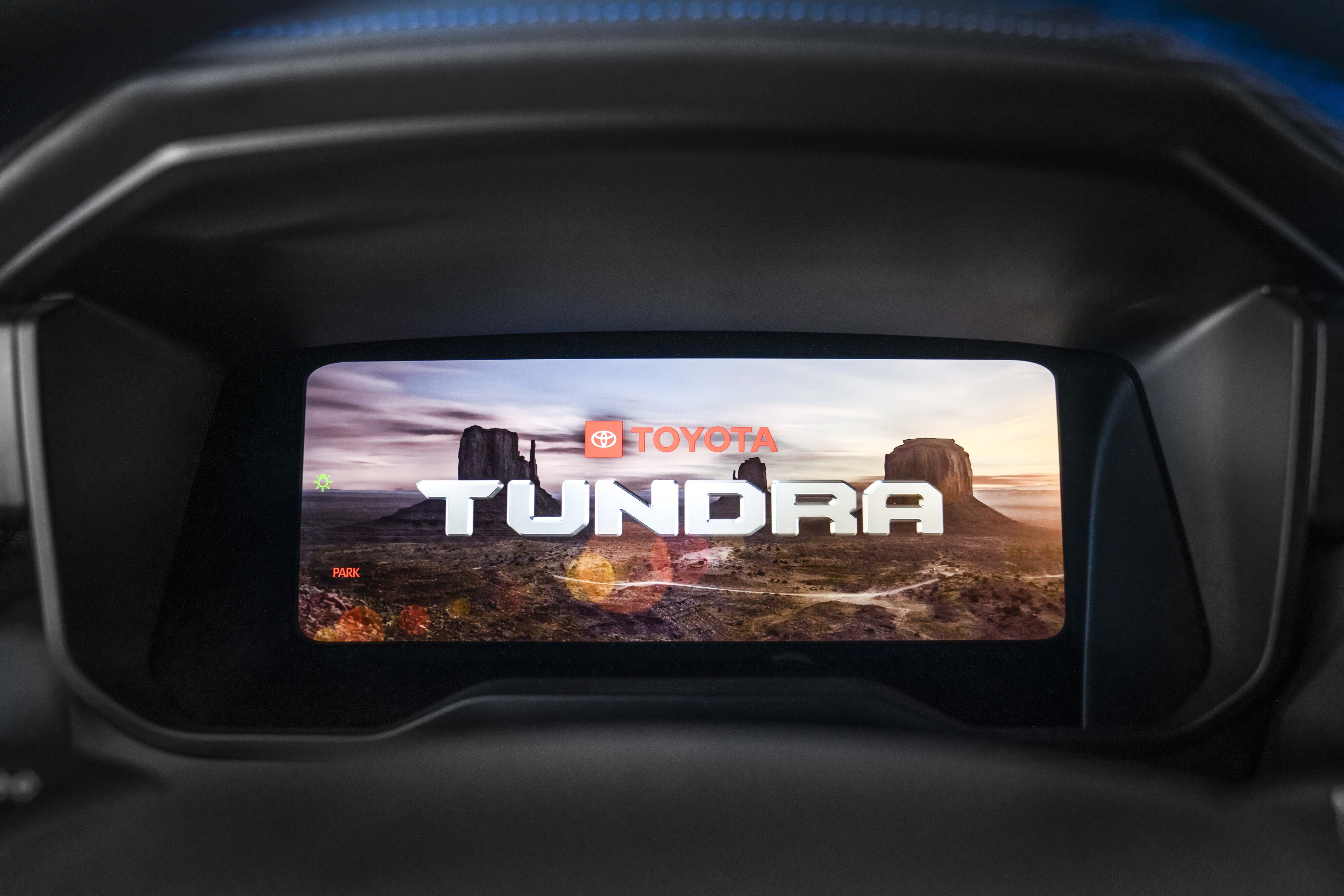
Driving
Speaking of power, its abundance is one of the Tundra’s highlights and the hybrid system makes full use of both the V6 and the electric motor.
Unladen with just the driver on board, the Tundra TRD Pro has incredible thrust, either from a stop or accelerating to highway speeds. Zero to 100 km/h launches happen in less than six seconds, which is incredible for a full-size truck that tips the scales at over 2700 kilos.
Acceleration is so relentless at anything less than highway speeds that the only conclusion the driver can derive is that the petrol and electric motors seem to produce much more power and torque than Toyota’s official numbers suggest.
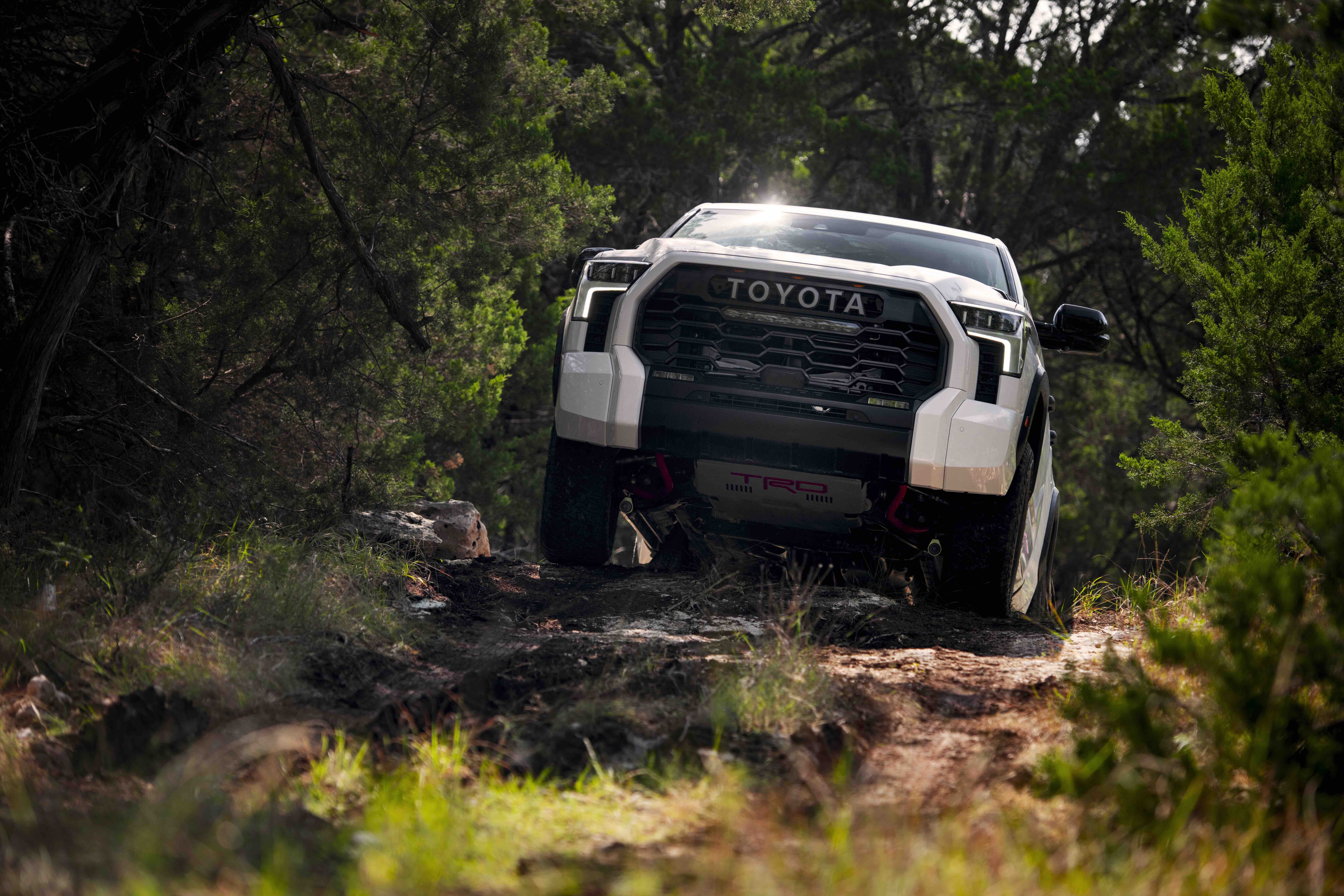
Selecting the Sport drive mode does change the transmission’s shift algorithm by choosing lower gears than normal, but the truck’s responsiveness doesn't measurably change because there is such an abundance of torque available at any time.
The combination of this torquey twin-turbo engine and the responsive electric motor is a match made in full-size truck heaven.
Toyota has fitted the TRD Pro with a slightly quicker steering rack than the rest of the Tundra models. The steering’s well weighted with decent on-centre feel, but as expected with electric assist, feel and feedback are at a minimum. It’s no surprise that given its length, the Tundra has a massive 7.5-metre turning radius.
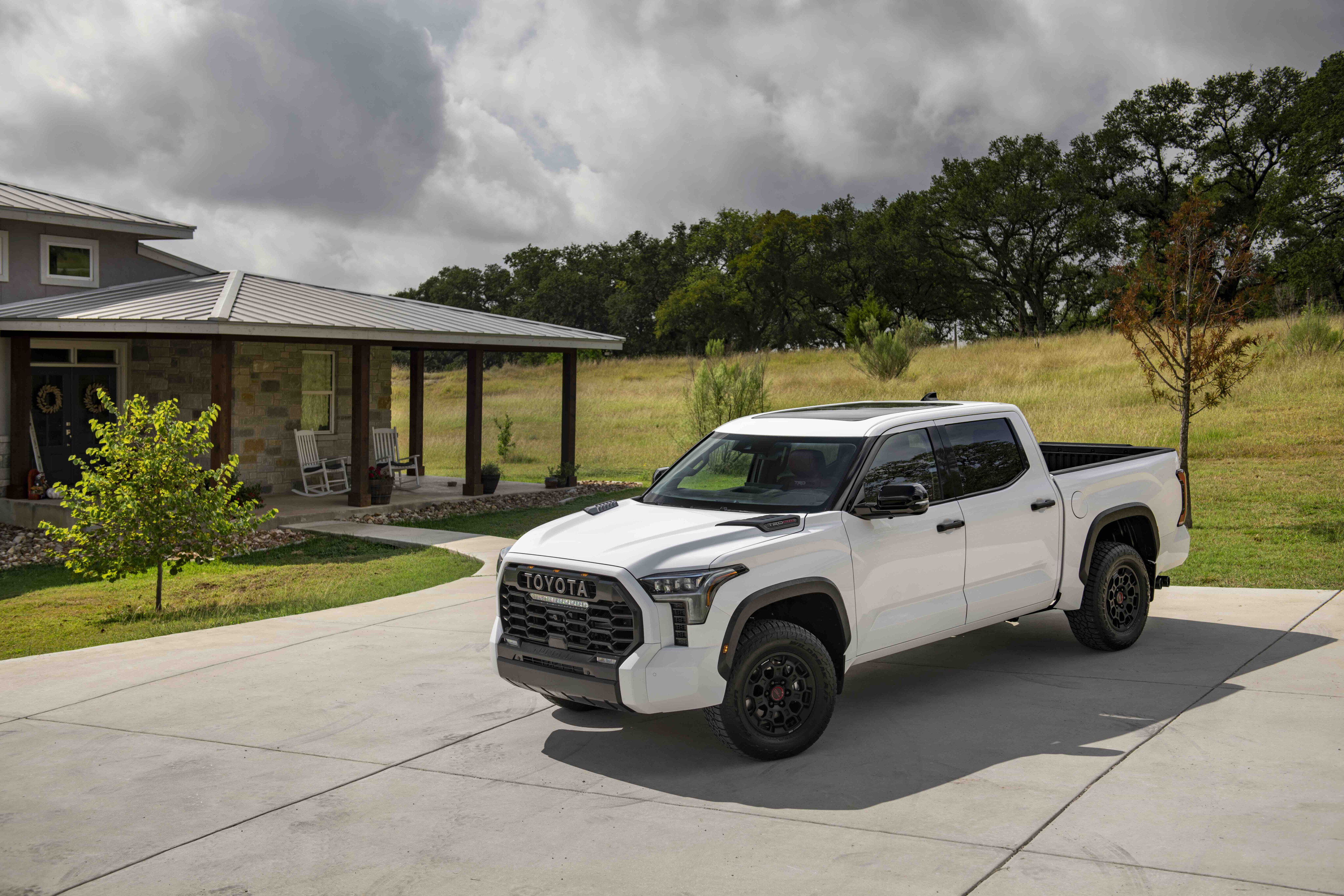
Braking is simply excellent and, when you’re on the move, you have a lot of confidence in the Tundra’s ability to slow itself with very clear modulation and a decent amount of feel through that pedal.
The brakes also feel up to the task of towing up to its maximum capacity.
It’s easy to assume that with the TRD Pro’s off-road orientation, its suspension may be compromised for day-to-day use. While the Ford F-150 Raptor and Ram TRX and excellent at high-speed off-road running, they’re softly suspended and in daily use demonstrate excessive body roll along with too much compliance.
Thankfully, the TRD Pro’s suspension set-up works for daily use and it absorbs road imperfections without complaint. Credit to the Fox dampers for delivering excellent body and wheel control, with limited secondary body movement.
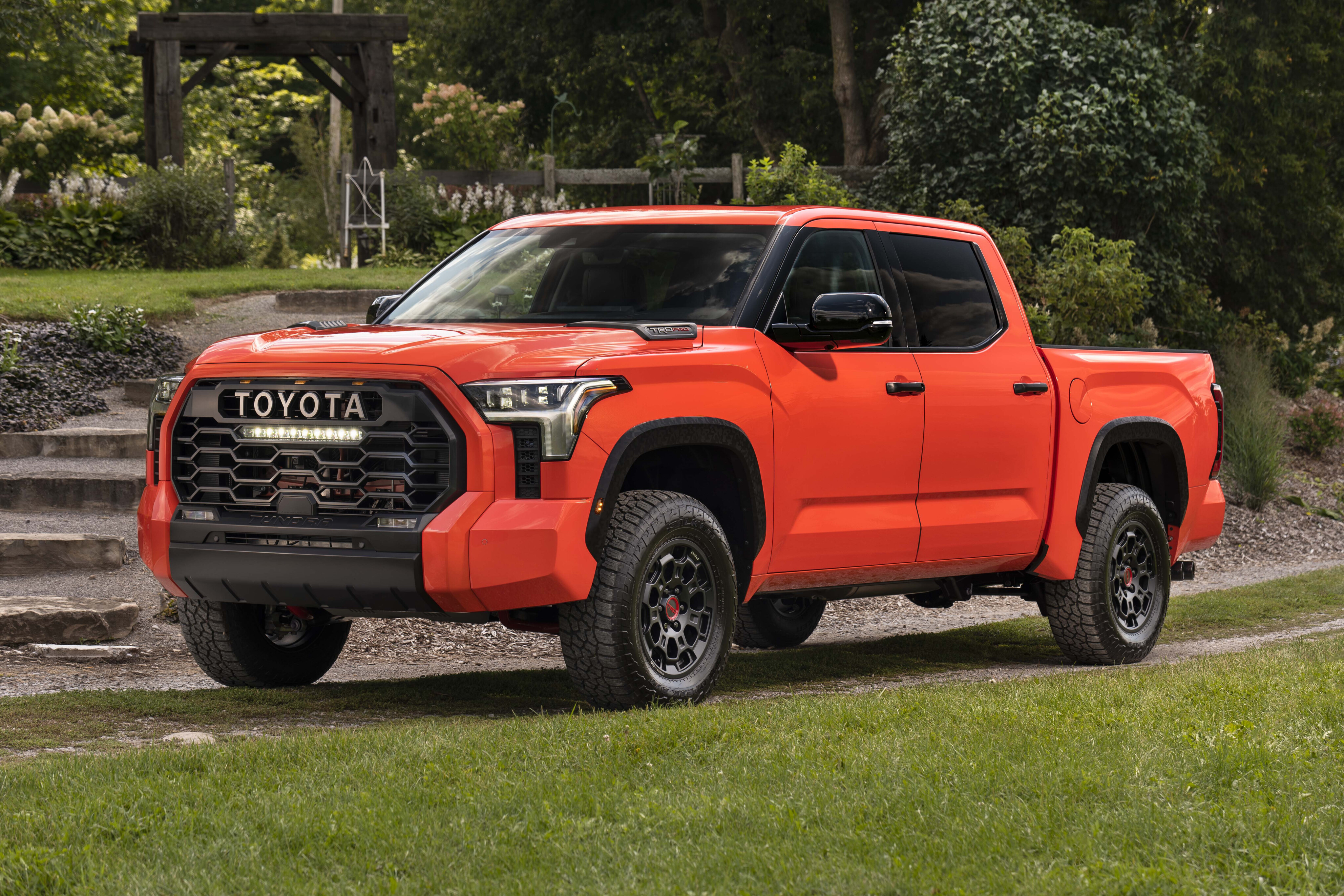
Fuel use
In a mix of equally mixed city and highway driving, the Tundra TRD Pro returned an observed but decidedly non-scientific fuel consumption of 15 litres per hundred kilometres.
For context, full-size pick-ups like the F-150, Ram 1500 and Chevy Silverado all deliver between 18 and 20L/100km in that same driving environment. Toyota may just have the fuel consumption champion among pick-ups for the time being.
VERDICT
The new Tundra is a refreshing take and a welcome option for full-size truck buyers. It’s distinctive, with a spacious and tech-forward cabin, and satisfying driveability.
It’s also got the right badge, but whether this Toyota can take on the likes of the established competition is a question that only Australian truck buyers can answer.
Specifications
| 2023 Toyota Tundra TRD Pro specifications | |
|---|---|
| Drivetrain | hybrid; 3.5-litre, twin-turbocharged V6 with electric motor |
| Transmission | 10-speed automatic |
| Power (combined) 326kW | 326kW @ 5200rpm |
| Torque (combined) 790Nm | 790Nm @ 2400rpm |
| 0-100km/h | 5.9 seconds (estimated) |
| Fuel consumption (combined) | 12.4l/100km |
| Fuel type/tank | 87 octane (USA)/122 litres |
| Weight | 2765kg |
| Suspension | Front: double wishbone; Rear: multi-link independent |
| Length/Width/Height | 5933/2073/1981mm |
| Wheelbase | 3701mm |
| Brakes | Front 353mm rotors, two piston calipers; Rear 345mm rotors, single piston calipers |
| Tyres | 285/65R18 Falken Wildpeak |
| Wheels | 18x8 inch, BBS forged |
| Price | TBD |
Things we like
- Abundant power and torque
- TRD Pro’s suspension
- Passenger room
- Genuine pick-up truck construction
Not so much
- Exterior dimensions
- Lack of steering feel
- No auto 4WD

COMMENTS